By Terry Sovil from the December 2016 Edition
A volcano (singular, volcanoes plural; Spanish volcán or volcanes) is a mountain which opens down into the earth to a pool of molten rock. When pressure builds up, an eruption can occur, causing gas and rock to shoot up through the opening and spill over or fill the air with smoke and fragments. An eruption can cause hot ash flow, mudslides, avalanches, falling ash, floods, lava flows and lateral blasts. They have also been known to cause tsunamis, floods, earthquakes, mud flows and falling rock. Volcanoes form when the magma from within the Earth
works to the surface. Then it erupts to form a lava flow and ash deposits. Over time it will get bigger.
Volcanoes have been categorized into three types:
1. Active – one that has recently erupted, in the past 10,000
years, and may erupt again.
2. Dormant – one that hasn’t erupted for a long time, in the
past 10,000 years, but still may erupt again, although
unlikely.
3. Extinct – One that erupted thousands of years ago with no
possibility of more eruptions, we think.
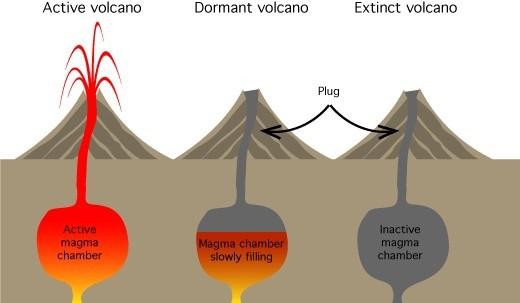
Volcanoes erupt because the Earth’s crust, made of huge slabs called plates, fit together much like a jigsaw puzzle. Sometimes these plates can move and drift. This is plate tectonics and the
friction causes the earthquakes and eruptions near the edges of the plate.
The theory of plate tectonics is one of continents drifting from place to place and breaking apart. During this process they grind against each other. This theory is supported by much evidence.
The Earth’s crust is many thin, rigid plates that move in many directions at varying speeds.
When they crash, or pull apart, it results in earthquakes. There are more than 1500 active volcanoes on the Earth. We know of about 80 that are under the oceans. Mexico’s volcanoes are part of the Pacific Ring of Fire. They have formed on the North American continental tectonic plate. The most active are Popocatépetl (located in the states of Puebla, Mexico, and
Morelos, in Central Mexico) and Colima. El Chichón erupted in 1982 and is now dormant. That cooled the world’s climate the following year!
Mexico’s volcanoes are located as follows:
Baja California, Northwest Mexico and Mexican Islands: 16 volcanoes, 3 probably extinct, 13 dormant
Western and Central Mexico: 24 volcanoes, 19 dormant, 3 probably extinct, 2 erupting (Colima and Popocatépetl)
Southern Mexico: 2 volcanoes, dormant
So, beyond the categories of Active, Dormant and Extinct are there other types? Yes there are: cinder cones, composite (also frequently called stratovolcano), shield volcanoes and lava volcanoes.
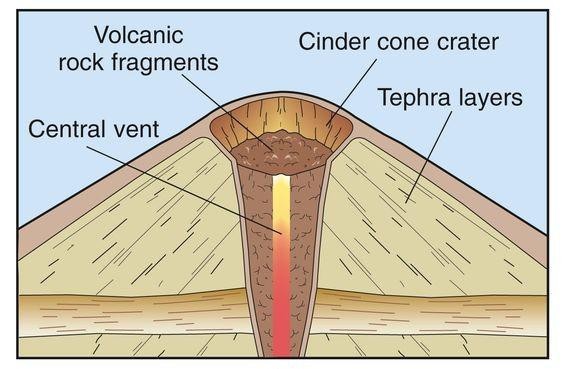
Cinder cones – circular or oval cones that are comprised of lava fragments from a single eruption that were blown into the air and fallen around the vent.
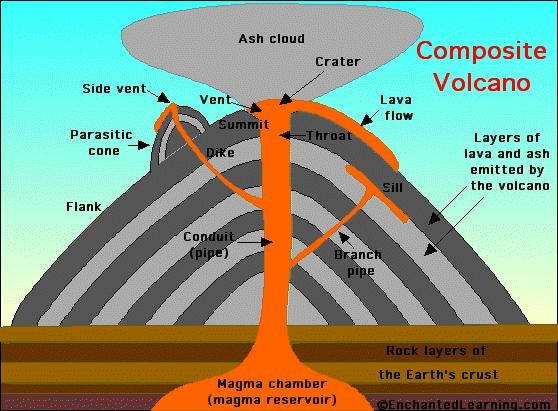
Composite or Stratovolcano – are steep sided and made up of layers of volcanic rock usually from high viscosity lava, ash and rock debris. The Colima volcano fits here. Some of the most powerful and destructive volcanoes in human history have been stratovolcanoes.
Shield – shaped like a bowl or shield in the middle, with long gentle slopes made of basaltic lava flows. Basalt lava flows are called flood basalts.
Lava – domes are formed when the lava erupting is thick and cannot flow, making a steep-sided mound as the lava piles near the vent.
So what is lava vs. magma? Magma is the liquid rock inside a volcano. Lava is liquid rock (magma) flowing out of a volcano. Fresh lava will glow red to white hot as it flows. Lava cools off very slowly as it is a poor conductor of heat. The flows slow down and thicken as they harden. Can lava flow fast? Yes! It is called a pyroclastic flow. Fluidized mix of solid to semi-solid fragments and hot gases flow down the side of a volcano. They are heavier than air and move much like an avalanche (snow).
They are fiercely hot with toxic gases and move at hurricaneforce speeds. This is the most deadly of all volcanic eruptions.
There is also a “lahar”. This is a mudflow or debris flow composed of pyroclastic material, rocky debris and water. It flows down from a volcano, usually along a river valley. Its consistency and actions are much like cement. It is liquid when moving but when it stops it turns hard, just like cement. This can cause as much destruction as lava.
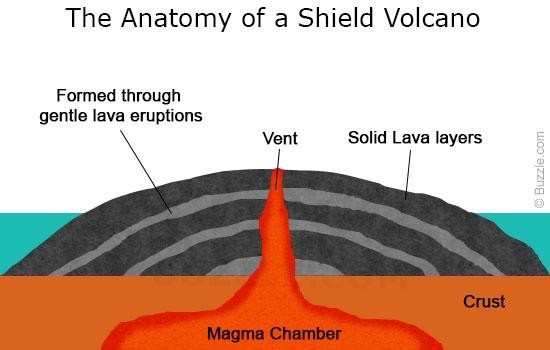
The Ring of Fire
The Pacific Ring of Fire is an area that has frequent earthquakes and volcanic eruptions that circle the basin of the Pacific Ocean. There are 425 volcanoes which is over 50% of the world’s active and dormant volcanoes. 90% of the world’s earthquakes and 81% of the world’s largest earthquakes occur along the Ring of Fire.
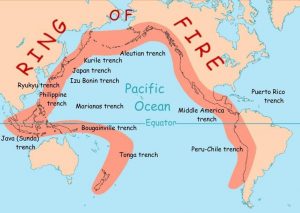
Colima’s Volcano
Latitude: 19.51, Longitude: 103.62, Elevation: 4100m or 13,450 feet, Stratovolcano or composite volcano. It is located about 125 km (75 miles) south of Guadalajara and just outside Colima City near Comala. It is the most active volcano in Mexico. The Colima Volcanic Complex is made of two main stratovolcanoes.
The older of Colima’s is called Nevado de Colima and has an elevation of 4,200m / 13,780 feet. The younger volcano, Volcán de Fuego (Volcano of Fire) is about 200 meters / 655 feet smaller and is located 5 km / 3 miles south of Nevado de Colima.
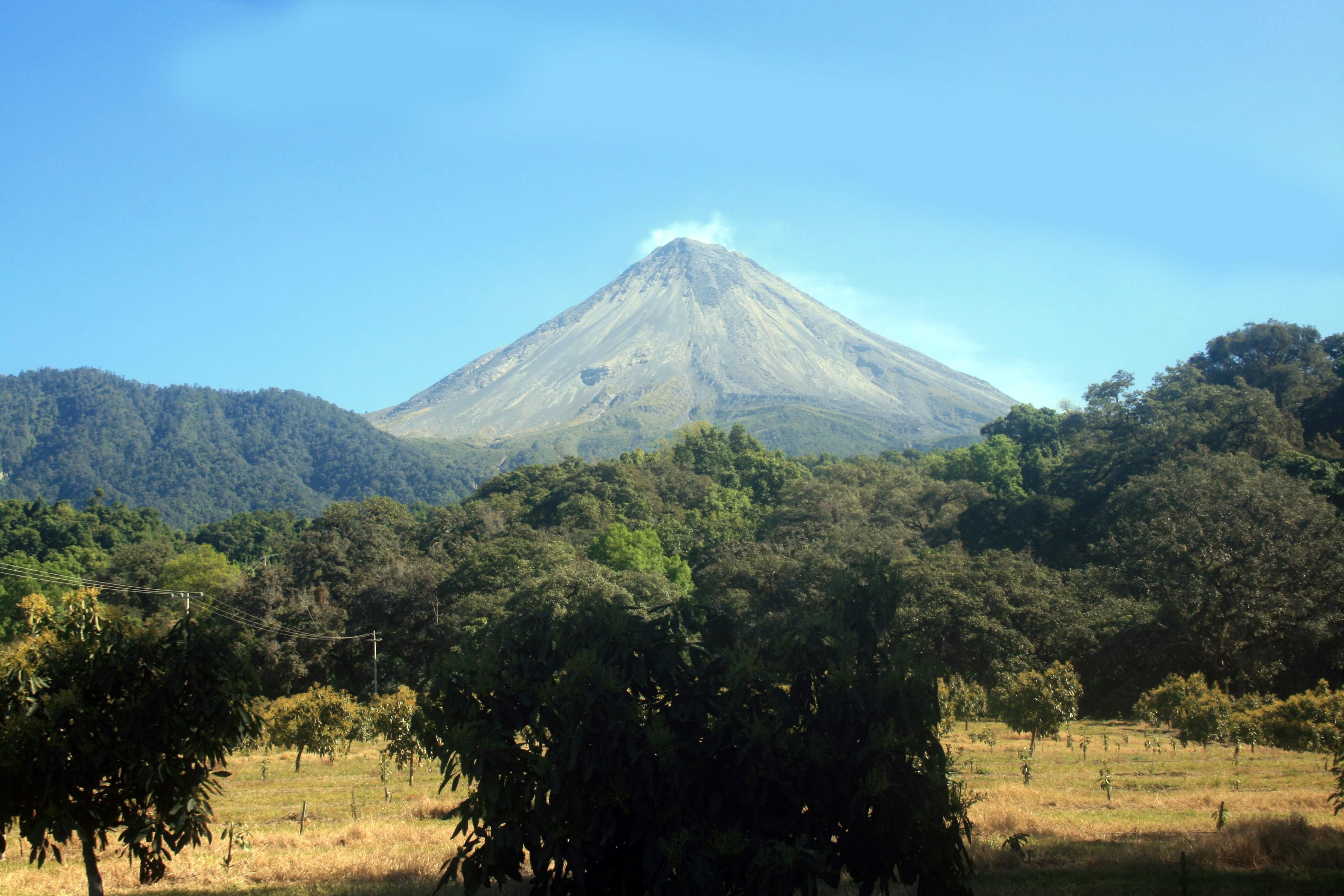
Download the full edition or view it online
—
Terry is a founding partner and scuba instructor for Aquatic Sports and Adventures (Deportes y Aventuras Acuáticas) in Manzanillo. A PADI (Professional Association of Dive Instructors) Master Instructor in his 36th year as a PADI Professional. He also holds 15 Specialty Instructor Course ratings. Terry held a US Coast Guard 50-Ton Masters (Captain’s) License. In his past corporate life, he worked in computers from 1973 to 2005 from a computer operator to a project manager for companies including GE Capital Fleet Services and Target. From 2005 to 2008, he developed and oversaw delivery of training to Target’s Loss Prevention (Asset Protection) employees on the West Coast, USA. He led a network of 80+ instructors, evaluated training, performed needs assessments and gathered feedback on the delivery of training, conducted training in Crisis Leadership and Non-Violent Crisis Intervention to Target executives. Independently, he has taught hundreds of hours of skills-based training in American Red Cross CPR, First Aid, SCUBA and sailing and managed a staff of Project Managers at LogicBay in the production of multi-media training and web sites in a fast-paced environment of artists, instructional designers, writers and developers, creating a variety of interactive training and support products for Fortune 1000 companies.


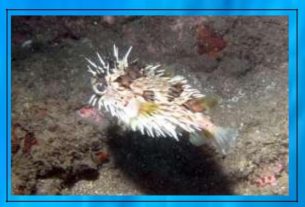

You must be logged in to post a comment.